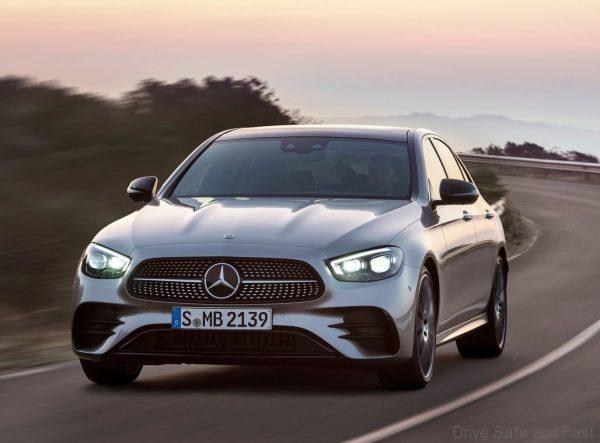Success story of the Mercedes –Benz E-Class
The heart of the brand
What is it that makes this model, since 1946 when the first E-Class named vehicle first drove out of the factory, a world best seller….till today. We think it is the over-engineered vehicle that provided years of trouble free motoring for its owners across the globe and the evergreen looks that kept giving its owners a sense of pride when behind the wheel.

Already in the early 20th century, vehicles positioned below the top-of-the-range and luxury classes, yet above the compact class, were an essential part of the model portfolio of Mercedes-Benz and the brands that came before. The first Mercedes models, which came to market in 1901 and established the concept of modern automotive construction, were already available in different versions and targeted different customers – including those who would choose a vehicle of the upper mid-range segment today.
With over 14 million units delivered since 1946, the E-Class is the best-selling model series in the history of Mercedes-Benz. It is perceived by many as the “heart of the brand”. Customers of the Mercedes-Benz E-Class are among the most loyal fans of the Mercedes star: Eight out of ten customers of the E-Class Saloon remain loyal to Mercedes-Benz when buying the next vehicle.
When production started up again after the Second World War, the first car to go into production was the 170 V model, originally introduced in 1936, initially as a vehicle for rescue services, police, commerce and trades. It was soon followed by a saloon version as the first post-war Mercedes-Benz passenger car in 1947.

The 180 model (W 120) of 1953 with unibody and “Ponton” shape set new technical as well as formal trends. It was followed in 1961 by the four-cylinder versions of the “Fintail” model series (W 110) – the first model with safety body and crumple zones. The next major step came seven years later in the form of the “Stroke Eight” (model series W 115/114). At the same time, with the arrival of the first coupé model, this marked a widening of the scope of available body variants. Its success was surpassed yet again by the successor model series 123 starting in 1976. It was also produced in an estate version – with which Mercedes-Benz set standards for the estate car as a family-friendly lifestyle and recreational vehicle. The 124 series of the years 1984 to 1995, which was also available as a four-seater cabriolet, was first given the name E-Class in mid-1993.
The “four headlamps” face and its innovative technology were the characteristic features of the 210 model series launched in 1995. The Mercedes-Benz E-Class of model series 211 was launched in early 2002. In 2009 it was followed by the 212 series (Saloon and Estate) and the 207 series (Cabriolet and Coupé), and from 2010 the E-Class Saloon also became available as the V 212 long version produced in and for China. In 2016, Mercedes-Benz launched the E-Class of model series 213. Starting in 2017, the Estate was also available as an All-Terrain version for the first time.
2019: E-Class sets new sales record in the Asia-Pacific region
More than 351,000 E-Class Saloon and Estate vehicles were delivered to customers in the third full year the new generation was on the market. The significance of China as the most important market for the saloons from Mercedes-Benz is clearly evident in the E-Class: The long-wheelbase version of the E-Class Saloon set a new record and saw double-digit growth in sales there. One out of every two E-Class Saloons sold worldwide in 2019 was delivered as a long-wheelbase version in China. In South Korea, the E-Class Saloon recorded the highest one-year sales to date.
Modern digital production of the new E-Class
The E-Class Saloon and Estate are produced in the Mercedes-Benz Sindelfingen Plant and come off the same line as the Mercedes-Benz CLS and the Mercedes-AMG GT 4-door Coupé in a flexible production system. The production uses modern digital technologies – from smartphones for locating vehicles on the line and additive manufacturing methods for producing equipment to digital shop floor management, which involves various key indicators being managed in one system. The production also uses the Ubisense system. This system locates the fastening tools an employee requires in the assembly process and provides the employee with the necessary information about a specific vehicle. In this way, only the tools actually required for working on the vehicle are activated. The employee receives optimal support in the assembly process.
The Sindelfingen plant is the centre of competence for passenger cars of the upper and luxury segment as well as the lead plant for the S- and E-Class. The location employs more than 35,000 people. In addition to the aforementioned models, Mercedes-Benz produces the S-Class Saloon, Coupé and Cabriolet, Mercedes-Maybach S-Class as well as the Mercedes-AMG GT family there. Going forward, this will also be the location for the production of electric vehicles of the new EQ product and technology brand. Starting in 2022, the Mercedes-Benz Sindelfingen Plant will be fully CO2-neutral. Furthermore, “Factory 56”, one of the world’s most cutting-edge automobile production facilities, is currently under construction at the location.